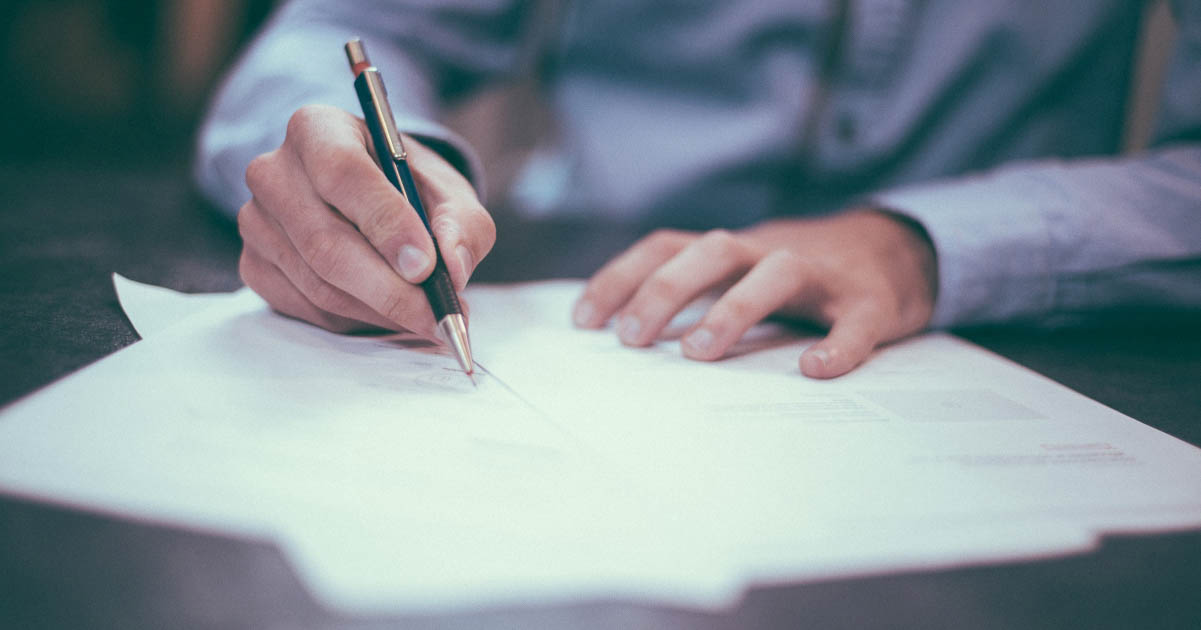
Formal Letter Format: Everything You Need To Know
Most of us will need to write a formal letter at some point in our lives. If you’re writing a letter for a professional context – such as for a job application or reference letter – it’s really important to get the tone and style correct. Email tends to be the more popular form of formal communication nowadays, but as a freelancer, you may still need to write a formal letter when applying for employment. Also, some clients may still use letters for business correspondence.
This post will explain what a formal letter should look like, the type of language you should use, and some things to avoid.
How to Structure Your Letter
This post will focus on block style, which is the most common letter format.
In the top right-hand corner of your letter, list:
- Your full name and title
- Your job title (if applicable)
- Your full address
- Today’s date
- Your email address
- Your phone number
Here’s an example of what this would look like:
Jim Jones, MA
English Teacher
5 South Prospect Street
Burlington, VT 17257
November 18, 2022
jimjones10489@uvm.edu
(555) 555-5555
In the upper left-hand corner, list details about who you are addressing:
- Full name and title
- Company or organization
- Full address
As an example:
Ms. Janice Joplin
Rock and Roll United
635 Ashbury Street
San Francisco, CA 12220
Under this, in the left-hand corner, begin the letter with an introduction and opening paragraph:
- Dear,
- Recipient’s title (when applicable)
- Recipient’s name
- Introduction – include information about yourself and the reason for reaching out. Give a short summary of what the reader should expect.
Dear Ms. Joplin,
My name is Jim, and I am a freelance proofreader. I saw your job listing for an Academic Proofreader on freelancersgalore.com and thought I would be perfect for the job due to my skills and qualifications. Enclosed is my resume.
In the body, give a detailed explanation of what you’re requesting or offering the recipient:
I have been working as a freelance proofreader for five years. During this time, I have edited essays, manuscripts, theses, and articles for academic journals. My master’s degree in English has allowed me to gain a thorough understanding of language and grammar, and I have learned the details of professional proofreading and editing from my proofreading certification courses.
In the closing paragraph, thank the reader for their time, consideration, or assistance. Give a short reminder of the discussed points, and then throw in a line stating your eagerness for them to contact you.
Thank you for your time and consideration. I am confident that my experience and qualifications make me the perfect academic editor for your project. I would be happy to offer you a sample 500-word edit for your review. Please feel free to contact me at your earliest convenience. I look forward to hearing from you.
In the bottom left-hand corner, close out the letter with the word “Sincerely” and your signature underneath:
Sincerely,
Jim Jones, MA
What Type of Language Is Appropriate
In formal correspondence, the vocabulary and syntax you use are very important, as it portrays how you want to be perceived in society and that you respect your client. Formal language can be described as impersonal, so avoid using personal pronouns and stick to an objective tone. You should also shy away from colloquial terms. As formal writing showcases your professional side, your letter should be completely error-free, especially if you’re working as a freelance writer, editor, or proofreader.
Things to Avoid
As mentioned above, when writing a formal letter, you should have no spelling or grammatical errors. To ensure no mistakes slip past your eye, always have your work proofread by a professional proofreader or editor. As formal letters should be professional and respectful, it’s also good practice to spell out contractions like “who’s,” “that’s,” and “you’re.”
In formal letters, avoid including unnecessary information that could detract from the point of the letter. You don’t want to bore your reader or reiterate the same point more than once. Finally, make sure to choose appropriate wording – don’t overcomplicate the language to try to sound smarter. Put yourself in the shoes of the recipient and consider vocabulary that’s comfortable for them to read.
Freelance Proofreading and Editing
Are you interested in starting a career in freelance proofreading and editing? We’ve got exactly what you need. Check out our Proofreader & Editor Course Bundle to begin your freelance journey today. If you pass with distinction, you’ll be guaranteed work with our partner company, Proofed!



Leave a Comment
Your email address will not be published.